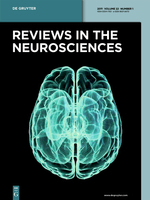
Frontiers in Neuroergonomics
Scope & Guideline
Exploring the Intersection of Mind and Design
Introduction
Aims and Scopes
- Neurotechnology and Human Performance:
The journal aims to investigate how neurotechnologies, such as brain-computer interfaces (BCIs), can improve human performance in diverse settings, including aviation, sports, and everyday tasks. - Multimodal Neuroimaging Techniques:
It emphasizes the use of various neuroimaging techniques, including EEG, fNIRS, and machine learning approaches, to understand brain activity and its implications for cognitive and physical tasks. - Mental Workload and Stress Assessment:
A core focus is on the assessment of mental workload and stress through innovative methodologies, aiming to facilitate better human-machine interactions and enhance user experience. - Applications in Neurorehabilitation:
The journal also explores the application of neuroergonomic principles in neurorehabilitation, aiming to improve therapeutic outcomes through tailored interventions. - Interdisciplinary Research and Open Science:
Encouraging interdisciplinary research, the journal promotes open science practices to enhance replicability and collaboration across various fields related to neuroergonomics.
Trending and Emerging
- Advancements in Brain-Computer Interfaces (BCIs):
Recent publications highlight significant advancements in BCIs, including their application in various fields such as neurorehabilitation and cognitive enhancement, indicating a strong trend towards developing more efficient and user-friendly interfaces. - Real-Time Neuroimaging Applications:
There is a growing focus on mobile and real-time neuroimaging techniques, showcasing their potential for practical applications outside traditional laboratory settings, which enhances the relevance of neuroergonomics in everyday life. - Integration of Artificial Intelligence and Machine Learning:
The incorporation of AI and machine learning in analyzing neurophysiological data is trending, reflecting a commitment to leveraging advanced computational techniques to enhance the understanding of human cognition and behavior. - Multimodal Physiological Monitoring:
An emerging theme is the use of multimodal physiological monitoring to assess cognitive workload and stress, indicating a shift towards comprehensive approaches that consider various physiological signals. - Neuroergonomics in Social and Collaborative Contexts:
Research is increasingly exploring the dynamics of human interaction in social and collaborative settings, particularly how neuroergonomic principles can enhance teamwork and communication, especially in high-stakes environments.
Declining or Waning
- Traditional Ergonomics:
The journal has seen a decline in traditional ergonomics studies that do not incorporate neurotechnological advancements, as the focus shifts towards integrating neuroscience with ergonomic design. - Basic Neuroscience Research:
There is a waning interest in purely basic neuroscience studies that do not have direct applications to human performance or ergonomics, reflecting a trend towards more applied research. - Single-Modal Studies:
Research focusing on single modalities (e.g., solely EEG or fNIRS) without integrating multimodal approaches shows a decline, as the field increasingly values comprehensive, multimodal assessments. - Generalized Stress and Emotion Studies:
Studies that examine stress and emotion in a generalized manner, without specific applications or technological integration, appear to be decreasing in frequency. - Static Laboratory Studies:
Research conducted solely in controlled laboratory environments, without considering real-world applications or ecological validity, is becoming less common as the journal emphasizes ecological and applied research.
Similar Journals

Brain Imaging and Behavior
Unlocking Potential: Pioneering Research in Brain ImagingBrain Imaging and Behavior is a premier journal published by SPRINGER, dedicated to advancing the understanding of the relationship between brain function and behavior through innovative imaging techniques. Since its inception in 2007, the journal has provided a crucial platform for researchers and professionals in fields such as Behavioral Neuroscience, Cognitive Neuroscience, and Psychiatry and Mental Health. With an impressive ranking within the Q1 category in Radiology, Nuclear Medicine and Imaging and maintaining strong Q2 status in several other categories, the journal is positioned as a leading resource for groundbreaking research. The journal aims to disseminate high-quality studies that explore neurobiological underpinnings of behavior, utilizing cutting-edge imaging technologies. Although it is not an open-access journal, the visibility and impact of published works in Brain Imaging and Behavior continue to influence the scientific community significantly, underscoring the critical intersection between imaging science and neuroscience.

REVIEWS IN THE NEUROSCIENCES
Exploring the Frontiers of Neuroscience KnowledgeREVIEWS IN THE NEUROSCIENCES is a prestigious peer-reviewed journal published by Walter de Gruyter GmbH, specializing in the multidisciplinary field of neuroscience. With a robust history dating back to 1986 and a converged publishing timeline through to 2024, this journal serves as an essential platform for researchers and professionals who seek to explore the complexities of neuroscience in a rapidly evolving landscape. The journal is currently indexed in Scopus, boasting an impressive rank of #19 out of 113 in the General Neuroscience category, positioning it in the 83rd percentile of academic journals. It is classified within the Q2 quartile, reflecting its significant impact and contribution to the field. While not an Open Access publication, the journal offers extensive access options for institutions and individuals eager to stay informed about the latest findings and advancements in neuroscience. REVIEWS IN THE NEUROSCIENCES aims to provide comprehensive reviews covering a wide range of topics in neuroscience, fostering scholarly discussion and advancing knowledge, making it an invaluable resource for researchers, academics, and students alike.

HUMAN BRAIN MAPPING
Exploring the intricate pathways of the human brain.HUMAN BRAIN MAPPING, published by Wiley, is a premier journal in the field of neuroscience, devoted to comprehensively advancing understanding of brain structure and function through innovative mapping techniques. With an impressive impact factor and ranked in the Q1 category across multiple relevant disciplines—including Anatomy, Neurology, and Radiology—this journal is recognized as a vital resource for researchers and professionals passionate about the complexities of the human brain. Founded in 1993 and continuously publishing groundbreaking research, HUMAN BRAIN MAPPING is essential for those looking to stay at the forefront of developments in anatomical and neurological research. Though it does not currently offer Open Access options, the journal remains committed to disseminating high-quality research that influences clinical practices and academic inquiry. Its esteemed position within Scopus highlights its significance; charting at the top percentiles across various medical and health fields serves as a testament to the critical contributions made by the authors and researchers involved. As it converges toward 2024, HUMAN BRAIN MAPPING continues to be the go-to platform for publishing pivotal insights into the intricacies of brain mapping methodologies and applications.

INTERNATIONAL JOURNAL OF INDUSTRIAL ERGONOMICS
Fostering insights that bridge science and practice.INTERNATIONAL JOURNAL OF INDUSTRIAL ERGONOMICS, published by Elsevier, is a premier scholarly outlet dedicated to advancing the fields of human factors and ergonomics, as well as public health, environmental, and occupational health. With an impressive Q2 ranking in both relevant categories, this journal serves as a crucial forum for researchers and professionals seeking to share and access high-quality research aimed at optimizing human performance in industrial settings. The journal has been at the forefront of ergonomic research since its inception in 1986, fostering a rich discourse across disciplines and providing invaluable insights that bridge science and practice. While open access options are not available, the journal is widely accessible through institutional subscriptions. With a Scopus Ranking of #118/665 in Public Health and a #10/46 position in Human Factors, it caters to a diverse audience interested in the latest findings and applications in ergonomics, ensuring its relevance in a rapidly evolving field. Join a community dedicated to enhancing workplace safety and efficacy through rigorous research and innovative methodologies.

Frontiers in Human Neuroscience
Connecting Minds: Where Neuroscience Meets Behavioral ScienceFrontiers in Human Neuroscience is a premier open access journal published by FRONTIERS MEDIA SA, dedicated to advancing the understanding of the complexities of human neuroscience. With an ISSN of 1662-5161, the journal has established its prominence in various fields, achieving a Q2 ranking in categories such as Behavioral Neuroscience, Neuropsychology and Physiological Psychology, and Psychiatry and Mental Health as of 2023. Since its inception in 2008, Frontiers in Human Neuroscience has consistently contributed to the scholarly dialogue by offering a platform for innovative research that bridges the gap between neuroscience and behavioral science. The journal's rigorous peer-review process and commitment to open access ensures that findings are readily available, promoting collaboration and progress within the academic community. With an impact on neuroscience disciplines, it stands at the forefront of the field, inviting researchers, professionals, and students alike to engage with cutting-edge studies and developments. The journal's address is located in Lausanne, Switzerland, where it continues to flourish as a hub for neurobiological exploration.

NEUROREHABILITATION AND NEURAL REPAIR
Exploring New Frontiers in Neurological Recovery.NEUROREHABILITATION AND NEURAL REPAIR, published by SAGE Publications Inc, is a leading journal in the fields of neurology and rehabilitation, addressing critical issues in neurorehabilitation across a broad spectrum of neurological disorders. With an impressive impact factor and consistently ranked in the Q1 category in both Neurology and Rehabilitation, this journal is esteemed for its rigorous peer-reviewed research contributing to advancements in clinical practice and rehabilitation strategies. The journal boasts an HIndex that reflects its global influence and is highly regarded among professionals and researchers, ranking in the top tiers of Scopus metrics across various categories. Since its inception in 1987, NEUROREHABILITATION AND NEURAL REPAIR has fostered innovative research aimed at improving outcomes for patients with neurological impairments, making it a crucial resource for those engaged in clinical research and therapeutic interventions. Explore this prestigious journal to stay at the forefront of developments in neurorehabilitation, with access options available for diverse readerships.

Frontiers in Neuroscience
Innovating research for a deeper cognitive insight.Frontiers in Neuroscience, published by FRONTIERS MEDIA SA, is a premier open-access journal dedicated to advancing our understanding of the nervous system through innovative and rigorous research. Since its inception in 2007, this journal has become an influential platform for researchers, featuring a diverse range of topics across various subfields of neuroscience. With its current ranking in the second quartile (Q2) of the category "Neuroscience (miscellaneous)" and a commendable position of #40 out of 113 in general neuroscience according to Scopus, Frontiers in Neuroscience is recognized for its high-impact contributions. The journal promotes free access to scholarly work, ensuring that cutting-edge neuroscience studies reach a global audience and foster collaboration across disciplines. By bridging gaps in knowledge and facilitating the exchange of ideas, Frontiers in Neuroscience plays a pivotal role in addressing the complexities of the nervous system and its effects on behavior, cognition, and health.

JOURNAL OF CLINICAL AND EXPERIMENTAL NEUROPSYCHOLOGY
Innovating pathways to enhanced mental health outcomes.The Journal of Clinical and Experimental Neuropsychology, published by Taylor & Francis Inc, stands as a pivotal resource in the realms of clinical psychology and neuropsychology. With an ISSN of 1380-3395 and an E-ISSN of 1744-411X, this journal has been a hallmark of scholarly excellence since its inception in 1985, continuing to shape the fields until 2024. It is renowned for its rigorous peer-reviewed articles and has garnered significant recognition, achieving a Q2 ranking in Clinical Psychology and Q3 rankings in various other relevant categories as of 2023. Serving as a bridge between clinical practice and experimental research, the journal underscores the critical role of neuropsychological assessment and intervention in enhancing mental health outcomes. Although not an open-access journal, it provides significant insights and empirical data that are crucial for researchers, clinicians, and students dedicated to advancing the understanding of cognitive functioning and psychological health. The journal's commitment to disseminating high-quality research contributes to its reputation and impact, making it a vital resource for those engaged in the study of neuropsychology and its clinical applications.

International Journal of Human Factors and Ergonomics
Fostering Knowledge for Optimal Human PerformanceWelcome to the International Journal of Human Factors and Ergonomics, a premier platform dedicated to the exploration and advancement of research in the increasingly vital fields of human factors and ergonomics. Published by INDERSCIENCE ENTERPRISES LTD, this journal serves an international audience of researchers, practitioners, and students, facilitating the dissemination of knowledge that aims to enhance the interaction between people and systems. With its ISSN 2045-7804 and E-ISSN 2045-7812, the journal actively contributes to the academic community's understanding of human capabilities and limitations, striving to improve product design, work environments, and overall usability. Despite its classification in Q4 of the 2023 Human Factors and Ergonomics category and a Scopus ranking reflecting the competitive landscape—where it stands at #37 out of 46 in its field—the journal is committed to building a strong foundation of evidence-based practices through rigorous peer-reviewed articles. Through its convergence efforts from 2016 to 2024, it aims to bridge theoretical research with practical applications to promote safety, efficiency, and user satisfaction across various domains.

Cognitive Neurodynamics
Illuminating the Dynamics of Thought and Behavior.Cognitive Neurodynamics is a leading journal in the field of cognitive neuroscience, published by Springer in the Netherlands. With an ISSN of 1871-4080 and an E-ISSN of 1871-4099, this journal has established itself as a prominent platform for innovative research from its inception in 2007, continuing to enrich the academic landscape through 2024. Recognized for its significant contributions, Cognitive Neurodynamics holds a Q2 quartile ranking in cognitive neuroscience and impressively ranks #27 out of 115 in the Scopus database, placing it in the 76th percentile among its peers. While the journal is not open access, it offers a wealth of studies focusing on the intricate dynamics of cognitive processes and neurobiological mechanisms, making it essential reading for researchers, professionals, and students alike. Its objective is to bridge the gap between theoretical insights and practical applications, fostering a deeper understanding of cognition through multidisciplinary approaches. Explore the latest advancements in cognitive dynamics and contribute to the evolving dialogue within this fascinating field.